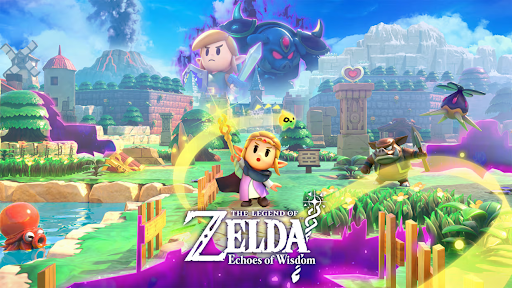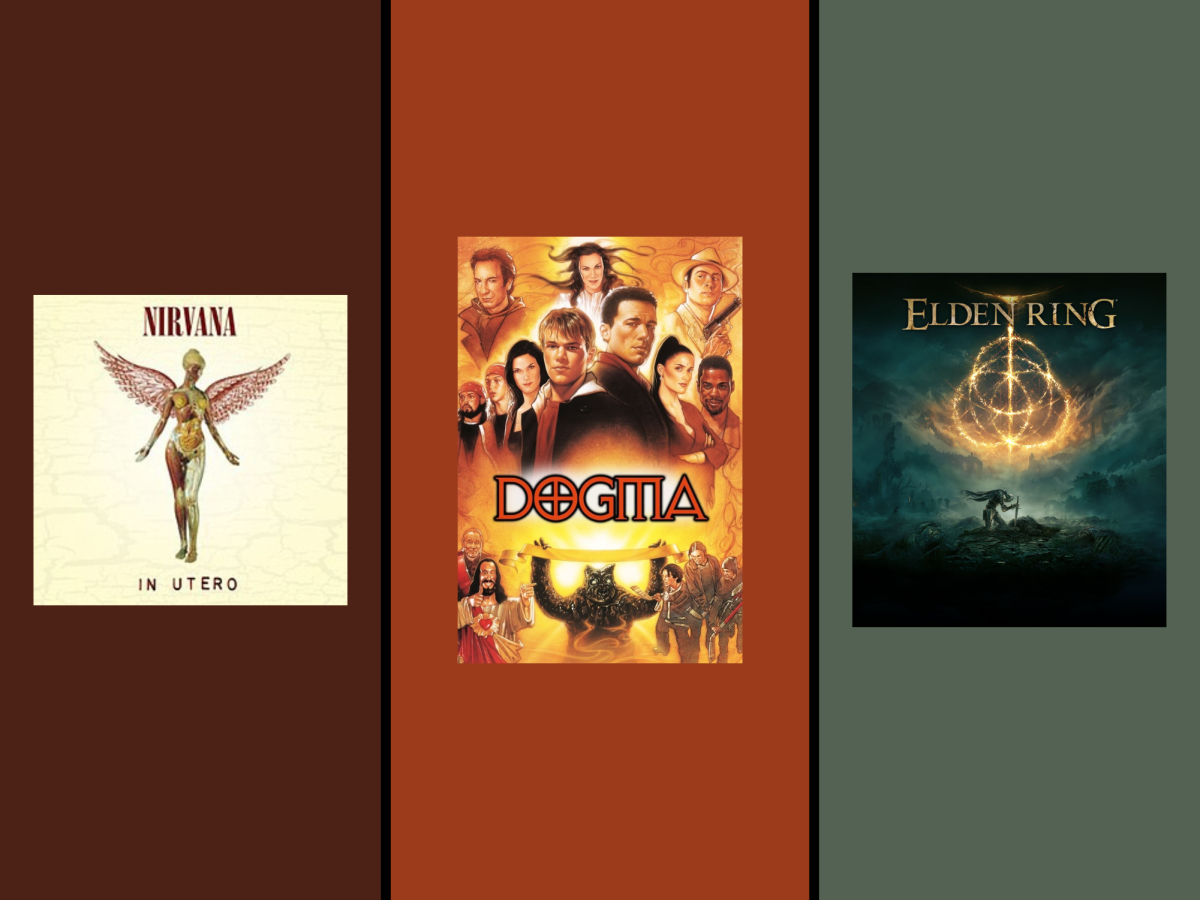
The Legend of Zelda: Echoes of Wisdom is a top-down, action adventure game released by Nintendo in September of 2024. This is the newest game in the series and strives to mix up the conventions of the “Zelda” experience.
The game takes place in Hyrule, a vaguely European country filled with dungeons, ruins, and towns. You play as the titular Zelda, the princess of this realm. In the beginning of the game, Zelda is accused of making “rifts” by her father, the king, and is exiled from Hyrule. It’s your job to find out how to get rid of the “rifts,” clear your name, and where they came from.
The main gameplay mechanic is that you can create “echoes,” copies of objects you have found in the past provided by the “Tri Rod” given to Zelda by her companion, Tri . Using these echoes, Zelda can traverse the vast land of Hyrule, defeat enemies, and help people with their smaller “quests.” Hyrule is composed of many regions, like the oceanic “Jabul waters,” the hot yet rocky “Gerudo Desert,” and the lush forests of the “Faron Wetlands.” Zelda must traverse these areas to mend the rifts in them and save the people of Hyrule.
Like many past “Zelda” games, combat plays a significant role in the gameplay. The formula of the combat in previous games was what most call “sword and shield” combat, a combat system that hinges on the player character having melee offense, and/or direct defense. However, in Echoes of Wisdom, combat isn’t as direct. Most battles will have you producing echoes of enemies to combat the real enemies. A bit later into the game, you do unlock the conventional “sword and shield” combat system in the “Swordfighter Form,” however its use is limited. This makes fighting with echoes the most obvious way to fight, but in true “Zelda” fashion, it’s not the only way. Alternative methods of battle include using inanimate object echoes as projectiles to throw, making the opposing enemies hit one-another, and running them over with a horse. As unorthodox as these methods are, they do prove effective, and will be important for your survival in Hyrule.
But there is more to a “Zelda” title than just combat and questlines. A staple of the series is the general progression of your character. Many games offer health increases after collecting 4 “heart pieces,” or collectables that grant you various types of gear. Echoes of Wisdom is no exception, providing the player with ways of strengthening Zelda’s arsenal. There are of course the things mentioned prior, but also new things. For example, the “might crystals.” Might crystals are crystals scattered all over Hyrule. Collecting a certain amount of these crystals and bringing them to an old man in the game’s first area named Lueberry will grant you an upgrade relating to your swordfighter form. Other forms of these collectables include “accessories.” Accessories are equipable trinkets that generally aid the player. For example, the “silver brooch” makes rupees, the game’s currency, appear more often when breaking certain objects. Another accessory is “Zora’s Flippers” that increase swim speed.
A brand new mechanic in this game are the “smoothie shops.” These shops will contain one merchant that will offer you to make a smoothie for the cost of 2 “ingredients” of your choice and 10 rupees. The ingredients required to make these smoothies can be found across Hyrule, and collecting them can be very useful in the long run. The reason why is because the smoothies you get from them provide infinitely useful buffs, like taking less damage when hit or avoiding taking frost damage in colder climates.
Overall, The Legend of Zelda: Echoes of Wisdom is a game worth playing. I and many others agree that it deserves its $60 price tag, despite it being one of the series’ shortest adventures. The game brings much needed, new options for play to the “Zelda” series, and brings hope for new installments









